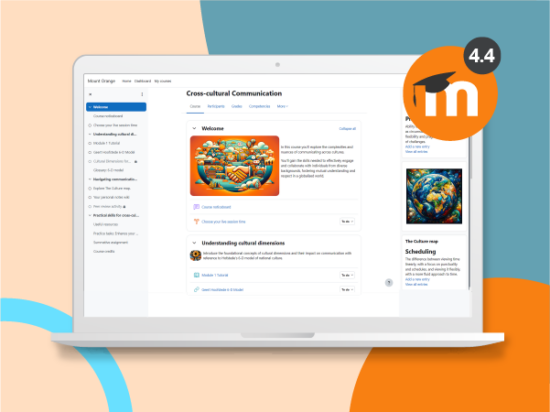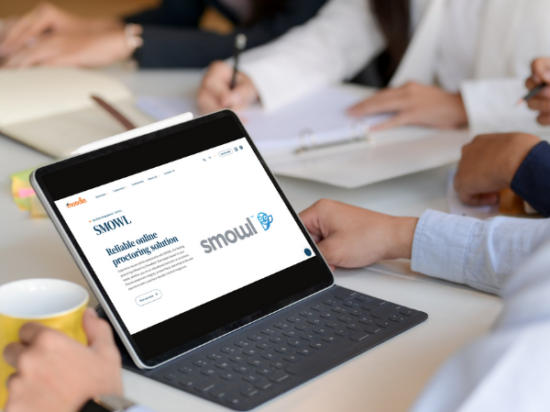As workplaces shift to digital operations, Learning & Development (L&D) teams are increasingly spending time focusing on online delivery of training for their workforce. In 2020, 57% of L&D professionals report that they spend more time with online learning now than they did three years ago. “Well, that’s hardly surprising” I hear you say and you’d be right! However, is this extra time spent on online learning really meaningful to organisations?
The need for L&D professionals to focus on what they do best
As you may guess, the answer to the question above is: unfortunately, not always. If you’re an L&D professional, you’ll be well aware that you invest a big chunk of your hours in time-consuming organisational and daily administrative tasks, leaving little room for the fundamental aspects of building a strong learning culture.
It is alarming to notice that L&D managers spend so little time on key activities such as identifying skills gaps (15%), spending time with managers to identify learning needs (15%), promoting learning programs to employees (16%) and championing learning programs to executives (15%) while they invest almost twice the time on building or sourcing learning programs and content (29%). However, we can’t blame them if the online learning solutions made available to them don’t help to reduce that time.
Additionally, when asked, L&D professionals don’t make a big difference between their top 6 strategic priorities, highlighting their importance and urgency:
- evaluating the impact of learning (38%)
- increasing learning engagement (35%)
- enabling self-directed learning with online learning solutions (35%)
- tracking skills gaps and development (32%)
- activating managers to encourage employees to make time for learning (32%), and
- integrating learning into other talent programs (29%)
With so many equally important strategic priorities and so little time to focus on the key fundamental activities of online learning, it was urgent to provide a solution that would address these challenges.
Optimise time with an LMS designed for workplace learning
Recently, Moodle rolled out Moodle Workplace, a solution built from the core Moodle LMS and meeting the specific needs of organisations providing training, professional development, and ongoing learning experiences to learners.
With this new platform, Moodle provides L&D professionals and administrators like you the ability to easily organise your learning environment, so that you save time and don’t spend it on recurring and cumbersome tasks. In short, so that you can focus on the core of your job and do what you do best.
Moodle Augmented with L&D features
If you are used to Moodle functionalities, Moodle Workplace doesn’t replace what you love. Quite the opposite: it improves your experience by boosting the most used L&D features from Moodle modules and adding new functionalities expressly built for to set up organisational learning in the best way possible.
What does that really mean for you?
- The content you’ve built to work in Moodle will adapt easily, because this is still Moodle.
- You can import Moodle LMS modules to Moodle Workplace even if they are not in the initial set-up because both platforms are interoperable.
- Emphasising those modules most commonly used in workplaces means cutting down on the extra options you normally don’t use, so creation and customization are both easier.
- You can set up ongoing learning goals that stretch beyond one module/course and follow users in their professional development through programs or learning paths. This makes it much easier to track who is opting in to learning opportunities
- Following up on people whose roles require certain core training modules for compliance with the law or industry standards is much easier. This means that you can track the continuing education of anyone whose CE requirements are a core part of their role in the company
- You can always easily revert back to Moodle LMS with Import/Export and still enjoy 90% of the functionalities that are available on Moodle Workplace.
Automated workflows: no more endless admin hours
Administrative tasks are traditionally one of the more cumbersome aspects of managing organizational L&D. Staying up to date on the enrollment, progress, and completed training opportunities for users in several departments or developmental specializations requires having the infrastructure to evaluate their progress individually, accommodate for their roles and career aspirations, and provide relevant coursework at all times. That’s where the dynamic rules, organization-oriented rubrics, and themes in Moodle Workplace can really cut down on your team’s admin time.
How can automated workflows streamline your work?
- Set up rules for each user group to streamline progress monitoring and follow-up tasks
- Create learning criteria by role, department, location, position, or practically any other identifying attribute from user identities
- Customisation makes it easy to set up the user attributes that fit your business
- Fast review of every user’s progress by the relevant L&D professionals in your organization
Multitenancy: manage and delegate easily
Perhaps the biggest differentiator between core Moodle and Moodle Workplace is the multi-tenancy feature. Moodle Workplace’s true multi-tenant architecture gives each of your divisions, departments or franchises their own dedicated learning partition where they can manage their users, courses, and automate workflows for their end users.
Here are a few elements that Multi-tenancy provides:
- Site-wide admins can manage and delegate learning programs to multiple audience all within a centralized hub for streamlined training and reporting
- You can customise each tenant with specific colors, logos, and favicons to represent their brand and style. You can even have a different Admin for each tenant and enable them to customise their virtual learning space
- Users can be assigned into tenants manually, using CSV uploads, or via API
- Within each tenant, you can include position hierarchies and departments enabling to create job function derived training enrollments, reporting, and compliance tracking
- While users are specific to individual tenants, courses can be unique to individual tenants or shared by multiple tenants.
Build Reports for Your Teams
Since employees are often engaged in ongoing training and cross-training to reinforce skills while staying up to date on professional standards and best practices, building the reports that show you what is working and what is going unaddressed is key to your program’s success.
Moodle Workplace makes this even easier than you’re used to, allowing you to pull up at-a-glance progress reports for whole teams as well as detailed reports for individual users.
This enables better progress tracking, and when paired with the right technology (such as Artificial Intelligence), it can even be used to bring training to your workforce in an adaptive way, adjusting what is presented according to the progress and choices made by individual users.
This helps in many ways, not the least of which is by providing active feedback to reinforce system use, which helps build the habit of interaction with the training modules that is core to the success of many L&D programs.
Step Outside of Assumptions About the Digital Classroom
While Moodle is an excellent LMS and a lot of work in the community has been done to create the modules that workplaces need, many of the core features of the base platform still assume a setup that parallels a classroom with finite course goals and a limited time frame.
The advantage to moving into an LMSthat is designed for workplaces is that there is a stronger ability for a progressive approach from L&D departments. You don’t have to get anything out of the way in one go – you can build learning programs and just “test and learn” to see what works best for learners. This allows you to create the best blended learning environment possible by adjusting and finding the right balance between online and offline learning.
Conclusion
With these new features, Moodle Workplace builds upon core Moodle to provide a powerful solution to meet the needs related to employee onboarding, compliance, certifications and extended enterprise training.



